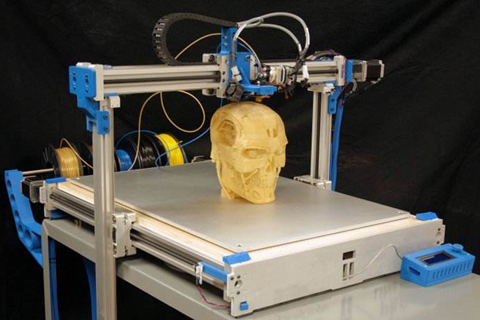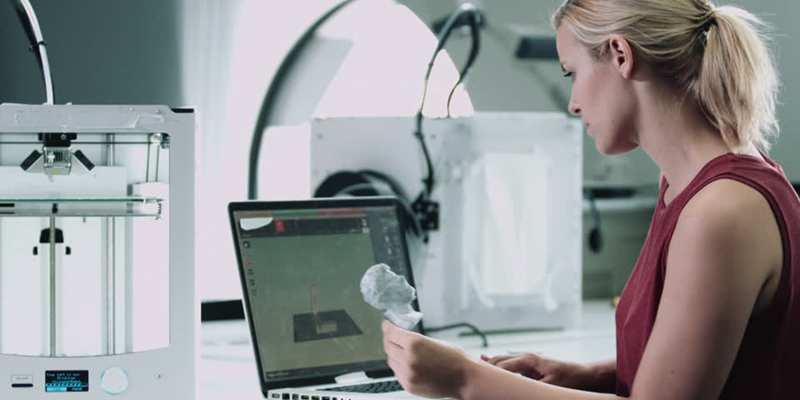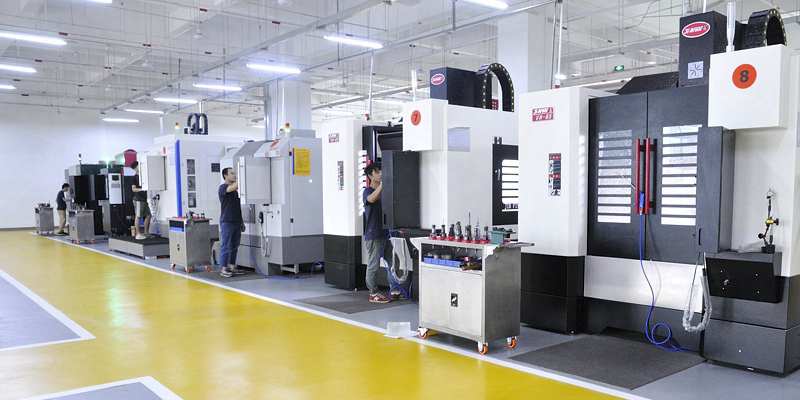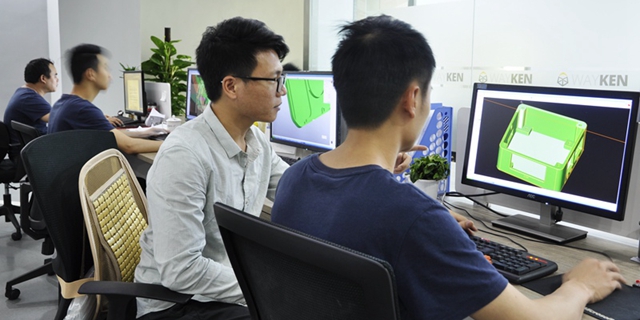Posted on: Aug 9, 2018, | By Vivi, WayKen Project Manager
Rudgley M defines rapid manufacturing as: “manufacturing technology for manufacturing the final practical product by additive manufacturing method”, which uses prototype manufacture technology to produce the desired product for production. Rapid manufacturing is a development direction of rapid prototyping technology, but there are still many areas for improvement.
SLA, SLS, FDM are the main technology for prototype manufacturer, and the common features of them are discreting the part into separate layers and make the layers independently.
Complex Geometry
The most tempting feature of rapid prototyping products is that they are almost unlimited in terms of geometry. With this process, articles with great independence and freedom of geometry can be produced, such as inverted concave, overhanging, free form, and various basic geometric shapes. For example, the SLS process requires no brackets, and the parts can be placed in any position in the machining position without the need for a clamp, which means that the SLS can provide nearly infinite geometric possibilities to the workpiece.
On the other hand, various products from micro to large sizes can be manufactured with rapid prototyping technology. The size of the product depends on the choice of process: SLS, SLA and FDM are usually used for the manufacture of medium-sized parts, because of the process execution and economic cost, as well as the performance of large-sized parts. The size of these processes is very limited when it comes to large products.
Since the polymer rapid prototyping technology does not require a mold similar to the conventional processing method, the customer-defined product manufactured by rapid prototyping is significantly more economical than the conventional process. This feature combined with the complex geometry that the product can achieve jointly point the way to rapid prototyping in the medical field. At the same time, the geometrical high flexibility also provides the possibility of combining RP with traditional processing methods, and has rapidly developed into one of the development directions of today’s RP technology. For example, the previous manufacture of thin-walled long and narrow parts can only be done with the EMD (Electro-Sparking) process, and now RP can also provide a complete solution for the manufacture of such parts.
DLM & Reverse Engineering
With the rapid prototyping process, parts with features (such as concave, inner sharp corners, long thin walls, etc.) that cannot be machined or difficult to machine with conventional machining methods can be easily manufactured. At the same time, in order to make RP technology work, designers must rethink the way they design parts to demonstrate the free design characteristics of these processes.
It is worth noted that all of the above questions about free design require further development of professional CAD software for RP technology. The combination of improvements in design tools and changes in designer design concepts can tap the potential of RP technology.
In addition to directly designing the model of the required product, engineers often design according to the existing physical design, which is called reverse engineering. Rapid detection and 3D CAD reconstruction techniques provide a way to obtain CAD models directly from physical objects.
Speedability
The reason why RP technology is called “rapid prototyping technology” is that it produces products with a shorter cycle than traditional processing. The sensitivity of the RP to the design is very low. That is to say, the degree of flexibility of the production is high, and the shape problem of the product is hardly considered at the time of manufacture, thereby saving a lot of time. In view of this, many companies use RP technology to manufacture test pieces of products to quickly understand the performance and other parameters of the product.
Economics & Other Constraints
Although the productivity of various RP processes has increased, the production requirements for RP productivity have not been met. In addition, due to the extreme unequalness that the RP process can provide, it also leads to considerable exaggeration of equipment and material losses.
At present, although RP technology has great advantages in product prototyping and product trial production, the high price and material loss of equipment and the difference in productivity with traditional processes limit the large-scale manufacturing of RP process. Of course, economy is just one reason why RP processes are rarely used to make long-lasting parts. Other major factors are product strength, material, process repeatability, and so on.
The Development of Prototype Manufacture Technology
As far as the development of RP technology is concerned, there is still a gap between the manufactured products and the traditional manufacturing methods in terms of surface roughness, precision, repeatability and product quality. It can be said that the existing RP process and process chain must undergo a period of development to achieve a reliable and safe technology to achieve the precision and quality required by the process. The RP process mentioned above has almost the same precision (0.1-0.2mm/100mm) and roughness (Ra 5-20μm), and the repeatability is relatively low. Further improvements should be made from the mechanical design side, which can be achieved through a technical feedback system. It is foreseeable that to improve the quality of products, there will be a composite process equipment combining RP process and traditional process.
From the perspective of the equipment itself and materials, the main research directions are focused on processing methods, processing equipment, laser generators and materials, aiming to improve the strength, durability and precision of the products, and the cycle of the products. These studies will ultimately provide a powerful impetus for the rapid prototyping transition to rapid manufacturing.

In the field of components, 3D printing technology can be used to quickly produce complex products. In the field of traditional automobile manufacturing, the development of automotive parts often requires long-term research and development and verification. From the R&D to the testing phase, it is also necessary to make a part mold, which is not only long but also costly. When there is a problem, modifying the part structure and so on also requires the same long cycle. And 3D printing technology can quickly make complex parts. When there is a problem in the test, modify the 3D file and reprint it to test again. It can be said that 3D printing technology makes the development of future parts cheaper and more efficient.







